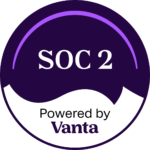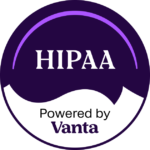
You hit Fetch Data in MediZues and have all of the returned data, now it’s time to update your CRM records!
This walkthrough is specific to GoHighLevel, but the general principle will apply to other CRMs too. More walkthroughs on the way…
Here’s how to set up GoHighLevel to properly receive the updated data from MediZues. The good news is that you only have to do this once 💪
1. Create a new set of custom fields in GoHighLevel that will receive the updates from MediZues.
You can do it however you want, but use the following as a general principle:
- In your GHL custom fields, create a new folder and label it “MediZues receiving folder”
- Within “MediZues receiving folder”, create the following custom fields:
- MZ MBI
- MZ DOB
- MZ Current contract #
- MZ Current plan name
- MZ Current enrollment date
- MZ Current ends on date
- MZ Future contract #
- MZ Future plan name
- MZ Future enrollment date
- MZ Last fetched on
- MZ First name
- MZ Last name
- MZ Address
- MZ City
- MZ State
- MZ Zip code
- MZ LIS
- MZ Medicaid


2. In GoHighLevel, start a new Workflow. Make the trigger Inbound Webhook.

3. Copy the URL

4. In MediZues, select 1 row, and hit the “Push button” on the top right.
5. Add a new Webhook destination. Then paste the URL into the “URL Destination” field, and input a nickname of your choice.

6. Check the box on the left to select the webhook, and hit Push.
7. Back in GHL, the workflow will ask you to select a Mapping Reference. Click it and select the most recent Request. You’ll be able to see all of the data that was sent to GHL from MediZues when you hit Push. It’ll look something like this:

Sample Output (JSON file format):
{
“MBI”: “7AA5BB6CC73”,
“Date of Birth”: “01-01-1950”,
“Contract No”: “H6622-056”,
“Plan Name”: “Humana Gold Plus H6622-056 (HMO)”,
“Enrollment Date”: “12-01-2022”,
“Ends On”: “12-31-2023”,
“Future Contract No”: “H2577-007”,
“Future Plan Name”: “AARP Medicare Advantage from UHC”,
“Future Enrollment Date”: “01-01-2024”,
“Last Fetched”: “12-10-2023 14:51:26”,
“First Name”: “JOE”,
“Last Name”: “SHMOE”,
“Address”: “1400 S MAIN AVE”,
“City”: “DALLAS”,
“State”: “TX”,
“Zip”: “75001”,
“LIS”: null,
“Medicaid”: “No”,
8. Find Contact. For the next action, select Find Contact. What this is going to do is find the contact in GHL based on the the webhook data from MediZues using the MBI. This will make it so that the data from MediZues is updated in the appropriate GHL contact!
- Click “Add Field”
- Select MBI
- Select “Inbound Webhook Trigger”
- Select MBI

9. Update contact field. This one is a little tedious (will take 5 minutes of clicking), but the good news is that you only have to do it once 😊
Map each MZ field to the appropriate inbound webhook data from MediZues. There are 18 fields in total.
Tag > Inbound Webhook Request > the data field that pertains to the MZ custom field.
Like so:

10. Send a whole batch of rows from MediZues!
You are all set up! Now it’s time to send however many clients you want from MediZues to GHL.
- Select All rows in MediZues
- Hit “Push”
- Select the webhook destination
- Hit “Push”
⚡ Boom. All of your clients just got updated with MediZues’s data. ⚡
11. Cross reference. There are many ways to cross reference, it all depends on what you want to analyze. There’s so much you can do from here.
Here’s an example of viewing clients that have a future enrollment:
- Filter > MZ Future plan name > Is not empty
- Select the columns that you want visible.
© Zues Software Inc. 2024.


